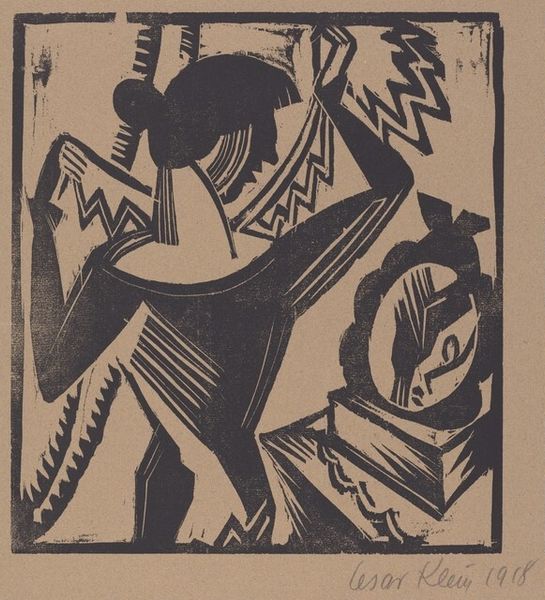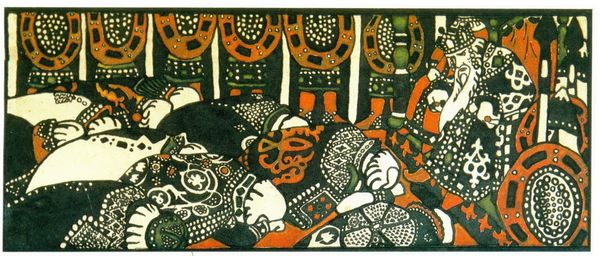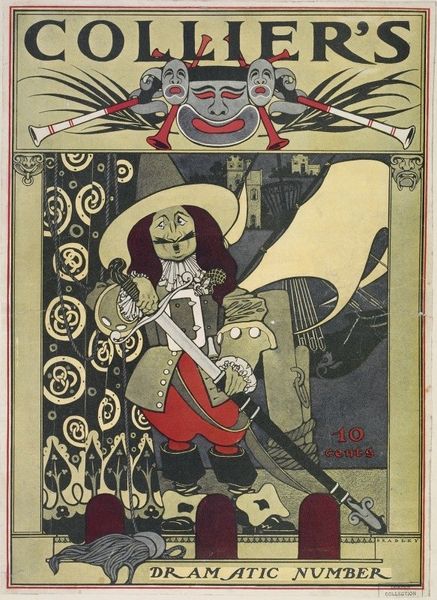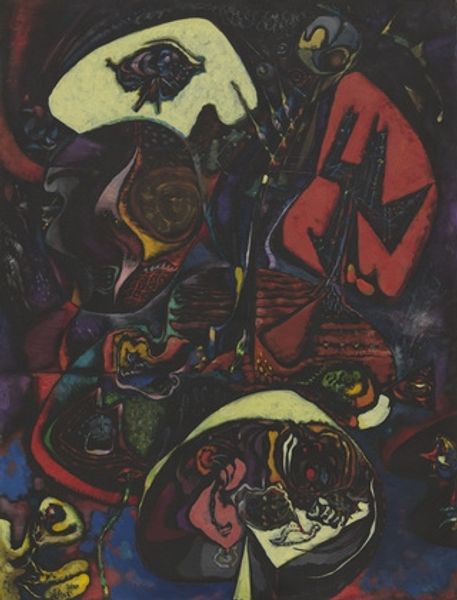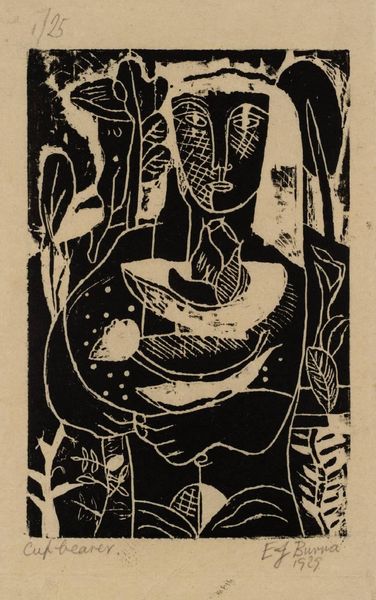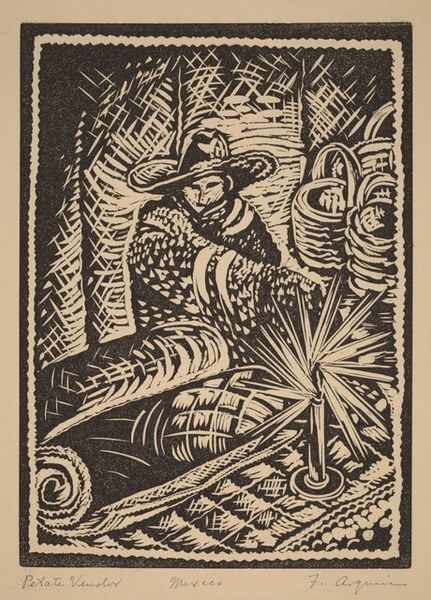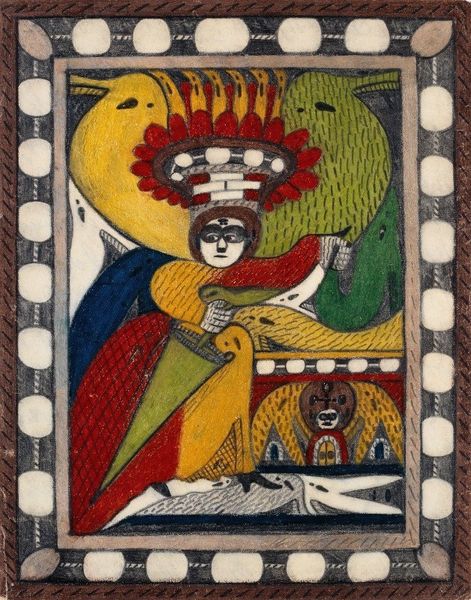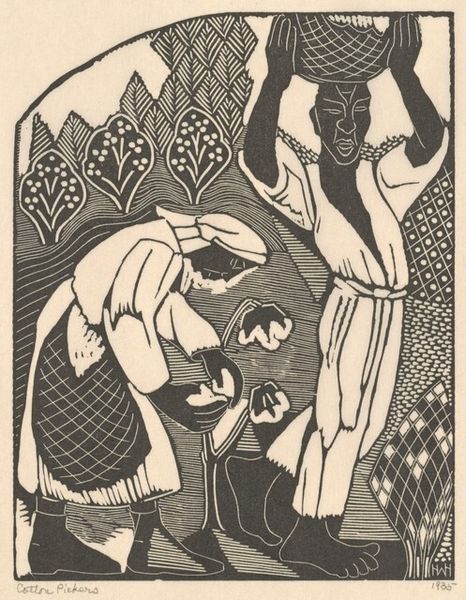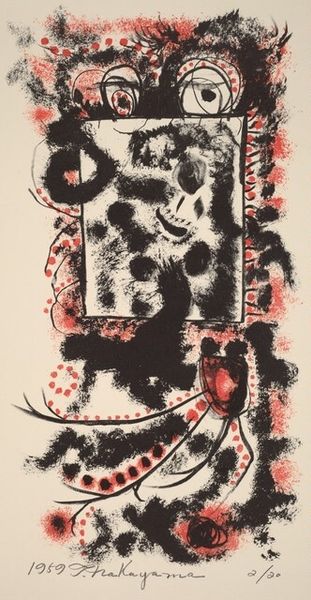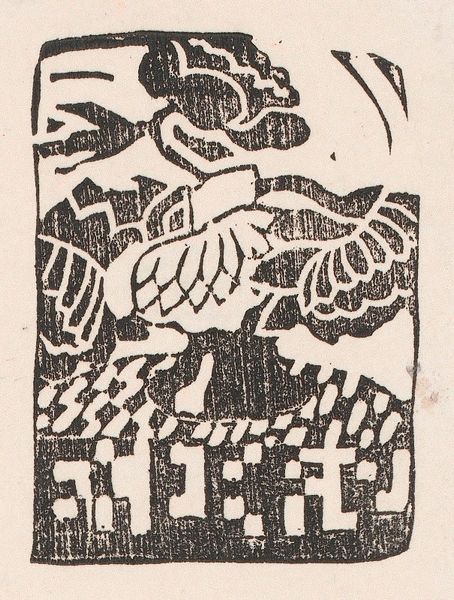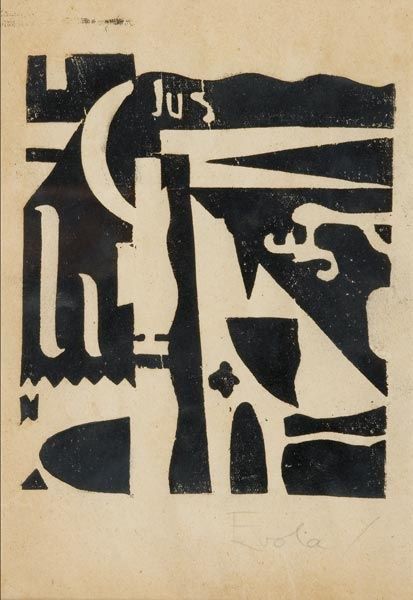
drawing, print
#
drawing
# print
#
graffiti art
#
street art
#
caricature
#
pop art
#
figuration
#
folk-art
#
naive art
#
history-painting
Dimensions: 64 x 49 cm
Copyright: Piroska Szanto,Fair Use
Curator: Okay, wow. Talk about a visual wallop! My first thought is pure theater, like a shadow puppet show gone deliciously wild. Editor: It certainly has a captivating boldness. We're looking at Piroska Szanto’s "Saint George," a print from 1982. Szanto, though born in Hungary, became a fixture in New York's art scene, known for work rooted in folk art traditions, but with a punk edge. Curator: A punk edge is right! Forget the polished knights in shining armor of Renaissance paintings. This George looks ready to throw down in a mosh pit. The simplified shapes, almost brutal in their directness, give it so much energy. And those colours! Editor: The high-contrast colour scheme creates an immediate visual impact and plays an important role. Reddish-brown for George, murky greens and blacks for the dragon—traditional roles inverted in a contemporary mode. We often think of Saint George as representing the triumph of good over evil, but Szanto complicates this a bit. Curator: Exactly! Look at that dragon’s expression – he's scary and grotesque, yes, but there’s almost a hint of…cartoonish absurdity? Is Szanto critiquing the simplistic good-versus-evil narrative? Or is she, like so many artists of her generation, attracted to both the high and the low? Is she mixing together tradition with new graphic expression? Editor: It’s a worthwhile observation. Consider her use of graphic stylization, almost reminiscent of street art or even the boldness of early Soviet-era posters, yet she couches all of that in this iconic, religious subject, loaded with historical meaning. And there's the matter of its being a print. That inherently lends it to reproduction and broad distribution—something I believe that would be attractive to many contemporary artists in the early 80s. It could function in various art distribution practices. Curator: So, it's less about pious veneration and more about cultural commentary, perhaps. About the stories we tell ourselves and how they morph over time, how they interact with pop culture and change. A saint for a fractured world? Editor: That seems right on. I think Szanto used an ancient story as a vessel to capture something essential about her own historical moment. Curator: Beautifully put. It gives me much to consider! Editor: And me too. Thanks.
Comments
No comments
Be the first to comment and join the conversation on the ultimate creative platform.
